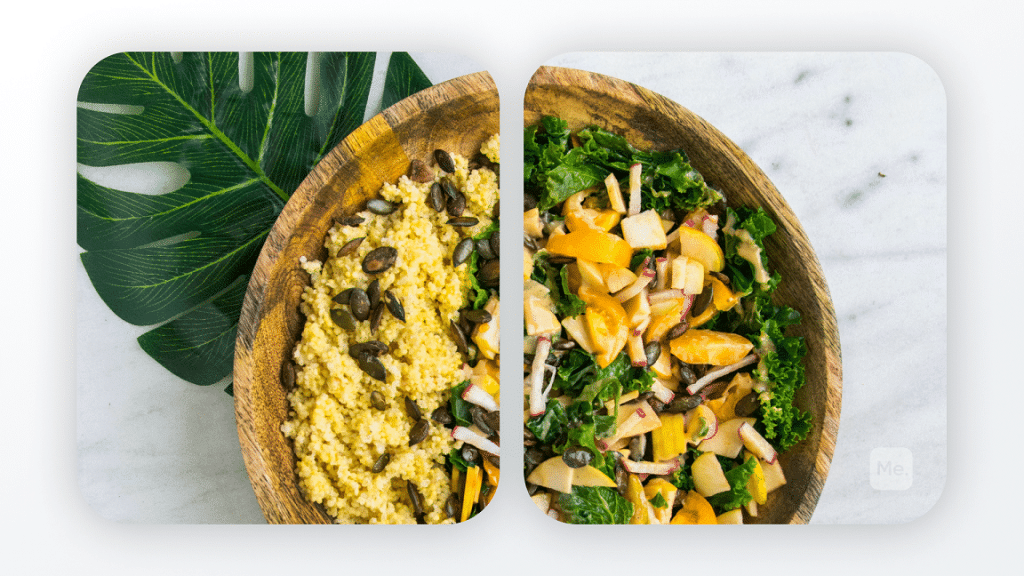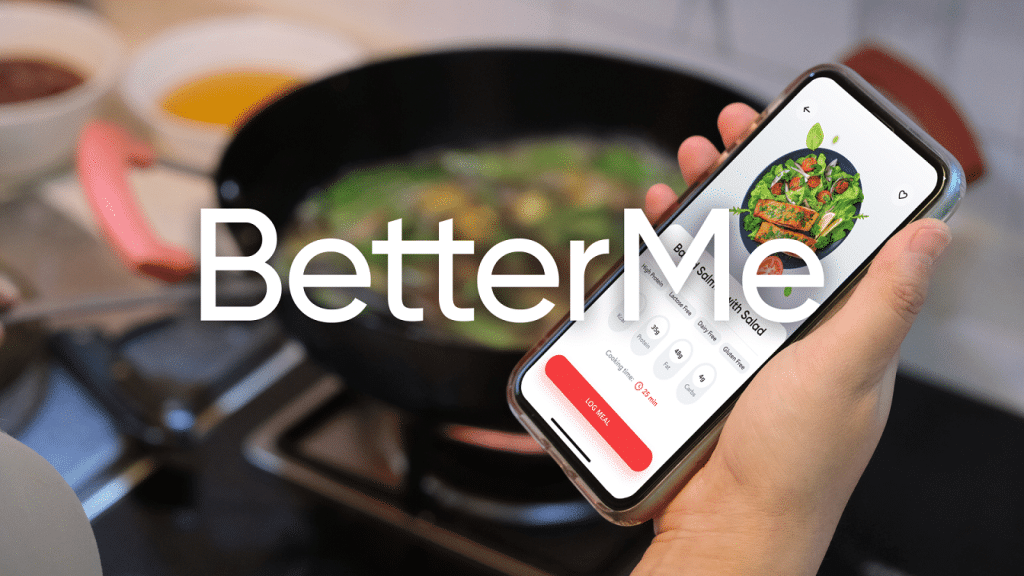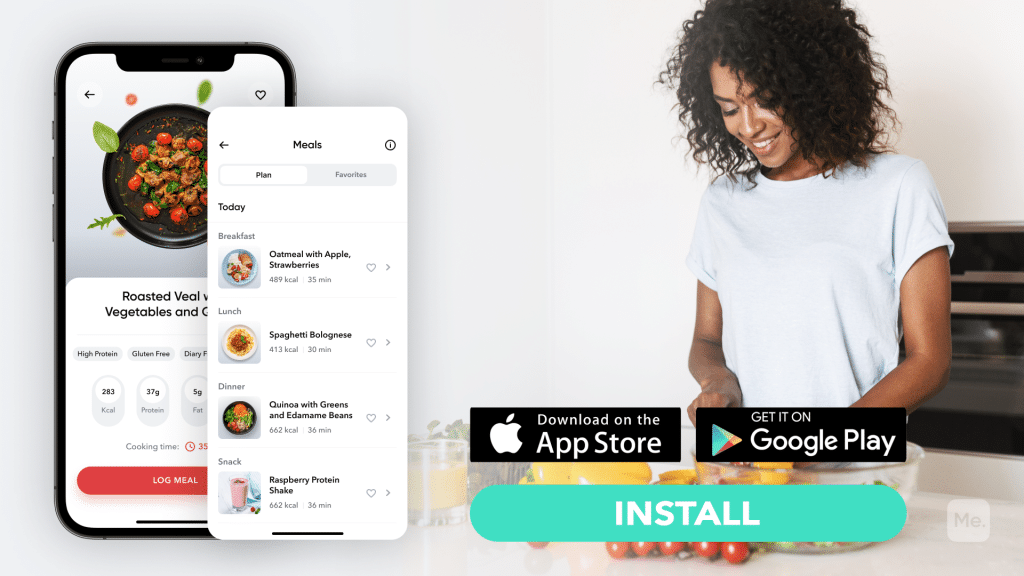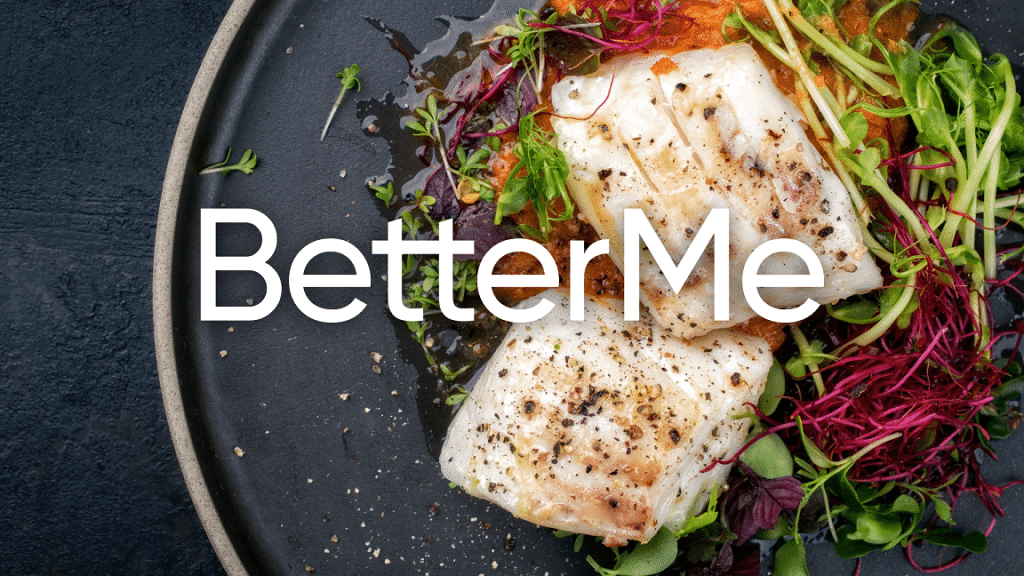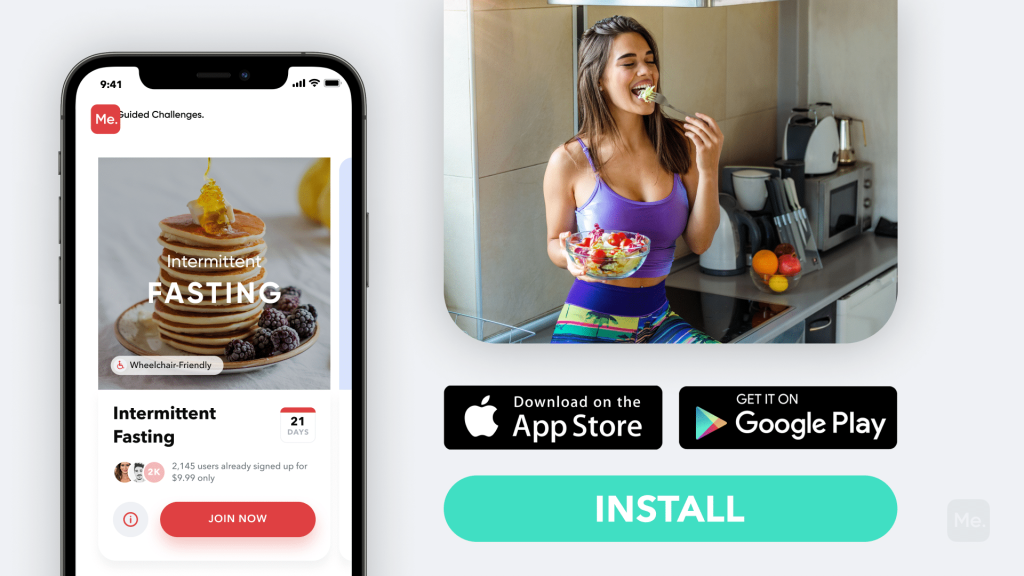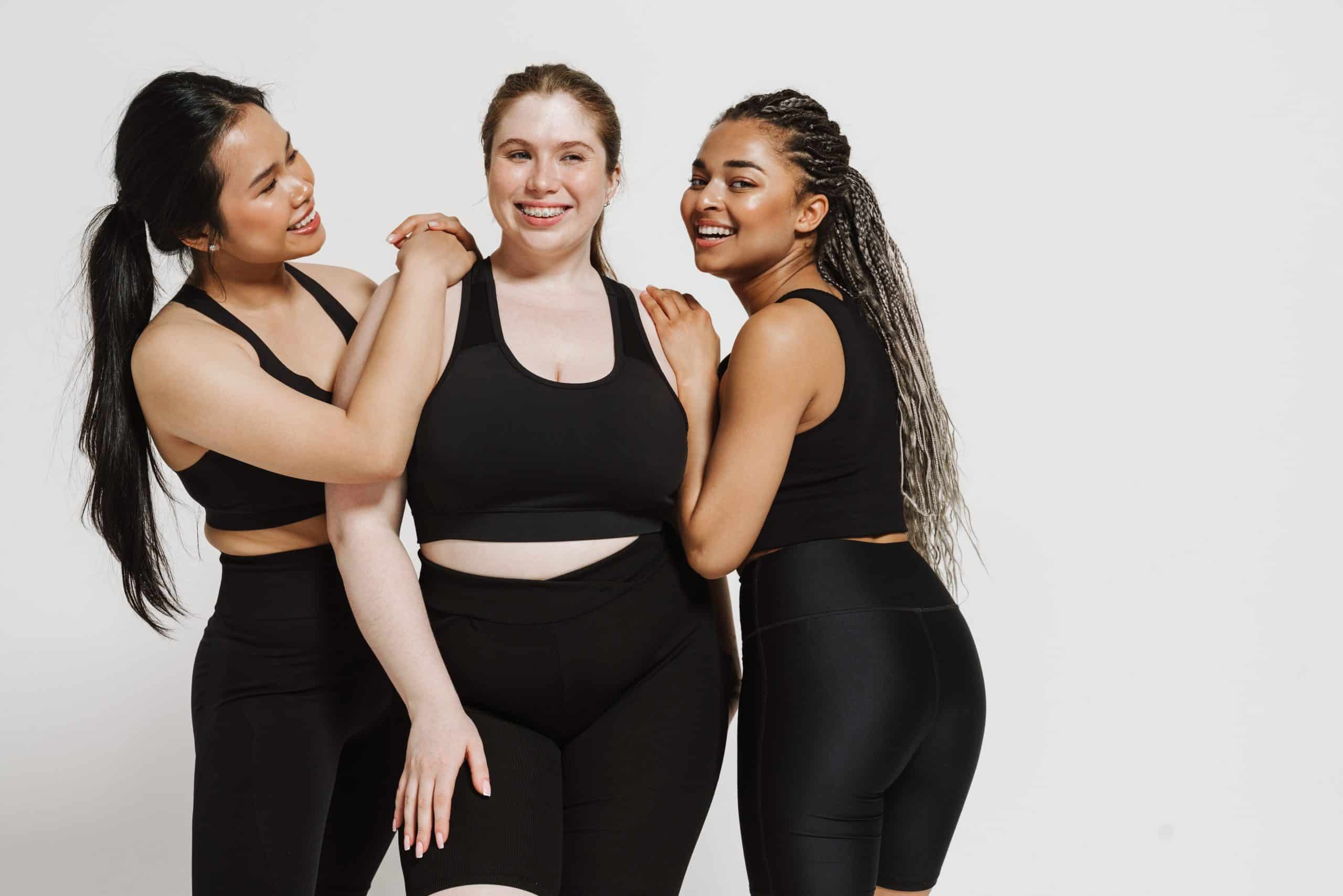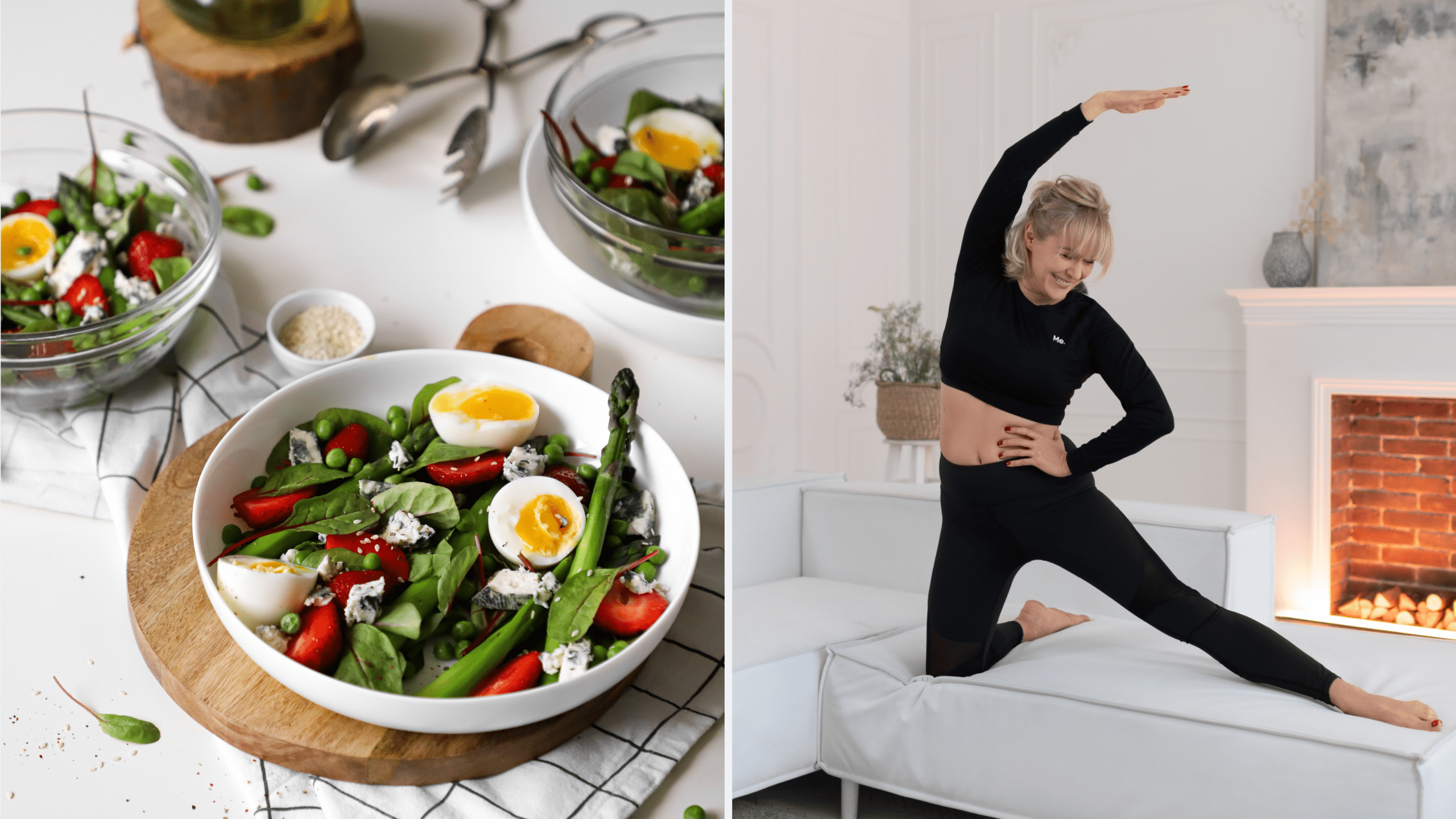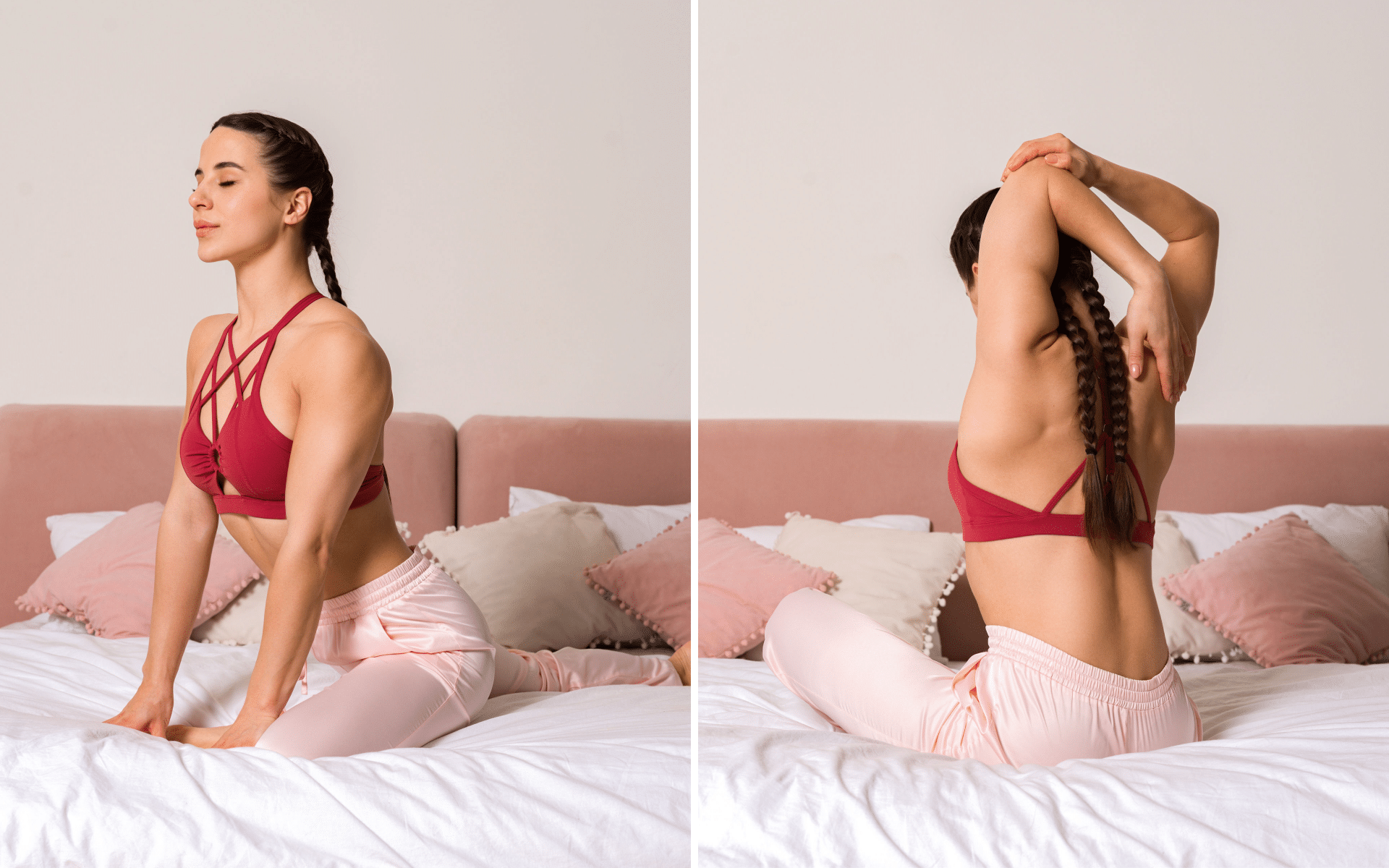Weight loss can be a long and frustrating process. It requires effort, patience, and sacrifice. When trying to shed some pounds, dieting is as important as exercising.
Get your personalized
meal plan!

There are several weight-loss diets you can try including the Mediterranean or Paleo diet; portion sizes remain crucial. If you don’t pay attention to your portion sizes, you may consume too many calories and jeopardize your weight loss. Here’s everything you need to know about portion size for weight loss.
What Is The Best Portion Size For Weight loss?
Portion size refers to the amount of food you eat in one sitting. It includes everything you serve on your plate during a meal. Sometimes it is used interchangeably with serving size, but the two are not the same thing. Serving size is the recommended amount of a particular type of food one should eat.
Are you wondering ‘how much should I eat?’ How much food one should eat depends on their age, sex, weight, height, level of physical activity, health, and genetics. Depending on these factors, some individuals require larger portions than others. For example, if you are an athlete, your body requires more energy, so you need more food than a worker who sits at a desk all day.
To lose weight, you need to burn more calories than you consume to create a calorie deficit. Weight loss is a gradual process and does not occur overnight. To shed the extra pounds, one usually needs to adopt a healthier lifestyle, including eating smaller portions, limiting processed foods, and increasing your level of physical activity.
When trying to lose weight, you might starve yourself or eat too little food to drastically reduce your calorie intake. This is often counterproductive as with long-term calorie restriction, the body enters starvation mode (1), where your body slows down your metabolism to conserve energy and you experience increased appetite and food cravings. Portion control does not mean eating too little of everything or starving yourself.
Sometimes, we unconsciously take in more calories than we think. We tend to eat all the food we serve on our plates and even go back for more (3). Increased portion sizes make it easier to overeat, leading to extra calories and weight gain over time (10).
Controlling your portion sizes helps keep your food intake in check. With proper portion control, you can create a calorie deficit successfully and shed off the extra weight, or just eat the right amount to maintain your weight if that is your goal. While it may seem abstract, portion control works and, in the long run, helps you maintain a healthy weight.
The best portion size for weight loss is a satiating amount of food that allows you to create a calorie deficit while providing enough energy and nutrients for your body. For example, if you consume 1,800 calories a day, each portion of the 3 main meals should provide around 600 calories. Below is a detailed portion size guide for weight loss.
Read More: Portion Control Diet Plan Female: 7 Days Of Healthy Eating Made Easy
How To Determine Portion Size?
Determining the exact optimal portion sizes might be challenging and may require a little practice. You can begin by measuring out food portions, or you can choose to use other measuring tools. Note that there is no one method to calculate portion sizes.
To get proper portion sizes, you first need to know your daily calorie needs. Calorie requirements are affected by several factors, including sex, age, weight, body, and level of physical activity. After which, you will tell how many calories you need to eat from foods to meet your energy requirements.
For this reason, portion sizes vary from one individual to another. For example, if you are trying to lose 20 kilograms, your portion sizes will differ from that of an individual trying to maintain their weight. Just ensure that your nutritional needs are being met.
Here’s how to determine portion size for weight loss:
- First, calculate your daily calorie needs using an online calculator.
- Determine how many calories you need to consume to create a calorie deficit.
- Plan out your meals, including snacks.
- Determine how many calories you should consume during each meal.
- Calculate the individual amounts of certain foods you need from each type of food to stay within the calorie limit for a single portion.
If you’d rather keep it more simple, www.myplate.gov has resources that can tell you how many cups, ounces, etc. of each food group you need each day based on your age, sex, and other factors.
BetterMe app will kick you out of the mental funk, shake off your extra weight, rid you off you energy-zapping habits, and help you sculpt the body of your dreams. Intrigued? Hurry up and change your life for the better!
10 Tips To Achieve Practical Portion Control
Measuring portion sizes does not have to be complicated. You can use a few easy ways to ensure you get the correct portion size for weight loss and do not overeat. You do not always have to use a food scale to measure out food quantities.
To achieve portion size management for weight loss, try the tips below:
Use Smaller Dinnerware
The size of the plates, spoons, bowls, and glasses you use may unconsciously influence the amount of food you eat (7). Using larger plates and bowls can make food appear smaller, often leading to eating more than you otherwise would. People who consume more due to larger plates are often unaware of this influence (2).
One study found that participants who used larger serving bowls served themselves 77% more pasta than those who were serving from medium-sized bowls (11). In a different study, nutritional experts served themselves 14.5% more ice cream when given larger spoons and 31% more when given larger dishes (8).
So, replace the large plates with smaller ones to help reduce your portion sizes. Also, swap the wide, short glasses for tall, narrow ones so that you do not drink too many calories from alcoholic drinks and other high-calorie beverages.
Ask For Half The Portion When Eating Out
Controlling your meal portions while eating out is more challenging. And if you are going out to your favorite restaurant where the meals are mouth-watering, resisting the temptation to eat more is tougher. Most restaurants serve large portions, serving up to 5 times larger than standard servings (6).
When ordering, ask that half your meal be packed to go and eat the other half. If you are in the company of a friend, you can share one plate. You can also ask that dipping sauces be placed on the side.
You can also inquire about the portion sizes from a waiter and choose a meal that is close to your optimal portion size. Do not use eating out as an excuse for overindulging. Also, steer clear of buffets or all-you-can-eat offers.
Read More: What Is A Serving Of Vegetables? How To Get Your Portions Right According To Science
Use The Plate Method
A simple way to measure your veggies, carbs, or protein portion size for weight loss is to use your plate as a serving guide. To cut down your calorie intake and lose weight, use smaller plates.
Below is a rough guide for this method:
- Vegetables and fruits: should fill up half your plate.
- Protein-rich foods: for meat, poultry, eggs, fish, legumes, beans, tofu, serve a quarter of your plate.
- Complex carbohydrates: such as whole grains should take up a quarter of your plate.
- Fats: such as butter and oil – take only half a tablespoon.
Use Your Hand To Estimate Portion Sizes
Alternatively, you can use your hand to estimate your portion sizes. Typically, the size of your hand corresponds to your body size, so bigger people have bigger hands and need more food.
Here’s how to estimate your portion sizes using your hand:
- High-carbohydrate foods: a cupped-hand portion
- High-protein foods: for foods such as fish, legumes, meat, and poultry – a palm-sized serving
- High-fat foods: a thumb-sized serving – like butter, nut butters, and oils.
- Salads and vegetables: a fist-sized serving
Start Meals With A Glass Of Water
Still not sure how to eat less? Try drinking a glass of water before each meal. Drinking a glass of water before eating your meals is a natural way to reduce your portion size.
Water is a natural appetite suppressant and helps fill your stomach, so you end up eating less. Hydrating also helps you clearly distinguish between hunger and thirst.
One study in adults found that drinking 500 ml of water before every meal resulted in a 44% greater weight decline over 12 weeks. This was likely due to reduced energy intake following water ingestion (13). So, taking water before meals helps you eat less and keep your portion sizes in check.
Lean and toned up body isn’t just a far-fetched fantasy. Check out the BetterMe app and watch it propel your weight loss journey into high gear!
Use Portion Control Dishes
Weight loss is worth investing in, given that the overall outcome is that you become healthier as being overweight increases the risk of diseases. You can thus use portion control dinnerware. Some portion control plates have individual compartments for each food type, making it easy to measure meat portion size for weight loss.
Fill Up On Vegetables
Many people probably consider vegetables a superfood. This is because vegetables are low calorie, rich in fiber, and have high water content. They are also nutrient-dense and contain many essential vitamins and minerals. For instance, 100 grams of watercress contains 11 calories (14), while that of lettuce contains 15 calories (9).
But, how much is a serving of vegetables? A serving of vegetables is about one cup raw or ½ cup cooked. But for leafy vegetables, one serving is about 2 cups raw. So, for example, one cup of raw broccoli, ½ cup of cooked sweet potato, or two cups of raw spinach, kale, or lettuce is a single serving.
Since weight loss is about consuming fewer calories, vegetables are an excellent weight-loss food. With vegetables, you can eat more to fill you up while staying within your calorie consumption limit. Try adding a side of vegetables to every meal or use vegetables such as lettuce to make meal wraps and sandwiches instead of bread.
Avoid Eating Out Of The Containers Or Packets
When you eat straight from a large bag of pretzels, do you know how much you consume? Large-size packages or food packed in large containers encourages overeating and makes it difficult to keep track of portion sizes. This is the case, especially with snacks.
Studies show that individuals tend to eat more from larger packages than small ones, regardless of food type, quality, and taste. For instance, participants ate 129% more calories when served from large containers (4). So, if you buy a large bag of chips or tin of mixed nuts containing about 10 servings, divide the contents into smaller packets beforehand, or dish out the proper serving into a small bowl for yourself.
Eat Slowly
Eating and snacking slowly can help you consume less food and reduce your calorie consumption. However, eating quickly makes you less aware of when you are full, and you may overeat. The brain takes about 20 to 30 minutes to register that you are full, so slowing down is essential.
For instance, one study found that eating slowly resulted in a greater feeling of fullness and decreased energy intake than eating quickly (5). Additionally, eating slowly also helps you appreciate the taste of the food and enjoy your meal. Removing distractions like TV or video games while eating may also help you eat less (12).
Try Easy To Remember Visual Cues
You can use everyday items around your home and kitchen to approximate the correct portion sizes. A computer mouse, tennis ball, dice, baseball, or golf ball, come in handy.
Below is a rough guide on how to use everyday items to eat the right portions:
- Three ounces of poultry, fish, or meat is the same as a deck of cards.
- One cup of vegetables and fruit is the same as one baseball
- One 2-tbsp serving of nuts and nut butter is the same size as a golf ball
- One medium potato is the same size as a computer mouse
- One slice of bread or waffles should be the same size as a compact disc
- A cup of cooked pasta or rice should be the same size as one baseball
- ½ a cup of desserts such as ice cream should be the same size as ½ a baseball.
Conclusion
The key to losing weight is to burn more calories than you consume. Eating the right portion should thus be a priority. When you keep track and stay conscious of how much food you consume, it is unlikely that you will overeat.
Avoid distractions, use smaller plates and share meals at restaurants to eat less food. Instead, eat substantial portions of proper well-balanced meals to meet your nutritional needs. At the end of the day, portion control helps you lose weight and achieve better overall health.
DISCLAIMER:
This article is intended for general informational purposes only and does not address individual circumstances. It is not a substitute for professional advice or help and should not be relied on to make decisions of any kind. Any action you take upon the information presented in this article is strictly at your own risk and responsibility!
SOURCES:
- Adaptive thermogenesis in humans (2013, ncbi.nlm.nih.gov)
- Are we aware of the external factors that influence our food intake? (2008, pubmed.ncbi.nlm.nih.gov)
- Bottomless bowls: why visual cues of portion size may influence intake (2005, pubmed.ncbi.nlm.nih.gov)
- Container size influences snack food intake independently of portion size (2012, pubmed.ncbi.nlm.nih.gov)
- Eating slowly led to decreases in energy intake within meals in healthy women (2008, pubmed.ncbi.nlm.nih.gov)
- Expanding portion sizes in the US marketplace: implications for nutrition counseling (2003, pubmed.ncbi.nlm.nih.gov)
- From mindless eating to mindlessly eating better (2010, pubmed.ncbi.nlm.nih.gov)
- Ice cream illusions bowls, spoons, and self-served portion sizes (2006, pubmed.ncbi.nlm.nih.gov)
- Lettuce, green leaf, raw (2019, usda.gov)
- Portion Size and Obesity (2014, ncbi.nlm.nih.gov)
- Serving bowl selection biases the amount of food served (2012, pubmed.ncbi.nlm.nih.gov)
- Watching television while eating increases energy intake. Examining the mechanisms in female participants (2014, pubmed.ncbi.nlm.nih.gov)
- Water consumption increases weight loss during a hypocaloric diet intervention in middle-aged and older adults (2010, pubmed.ncbi.nlm.nih.gov)
- Watercress, raw (2019, usda.gov)

